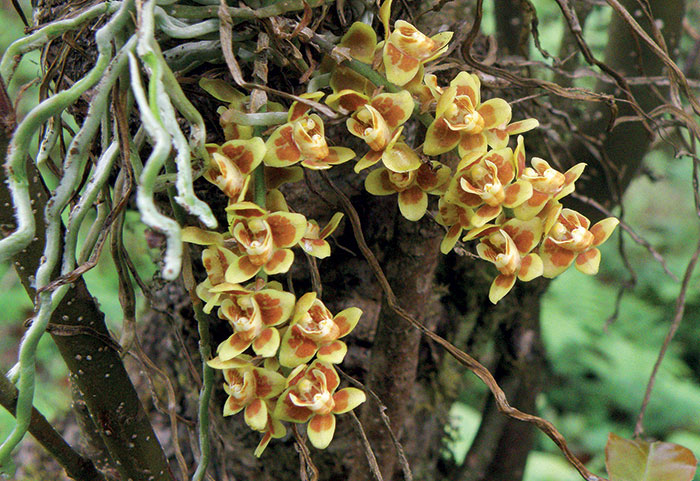Choki Wangmo
The National Biodiversity Centre (NBC) discovered and recorded two new orchid species— Chiloschista densiflora and Chiloschista himalaica—last week.
Chiloschista densiflora, named in reference to the densely flowered inflorescences was discovered from Zhemgang in 2014.
The species have yellowish flowers with brown spots on the sepals and petals, but differs by the larger flower, with virtually glabrous to indistinctly micro-pubescent sepals and petals. It is mostly found in Trongsa and Zhemgang.
Chiloschista himalaic, named according to the general area of distribution in the Himalayas was discovered from Chukha in 2015. It is currently found in Chhukha, Haa, Samdrupjongkhar and Zhemgang.

Chiloschista densiflora
Both samples are deposited and cultivated at the National Herbarium at the Royal Botanical garden in Serbithang.
The report on the new species that described, illustrated, and compared these species with similar species stated that although the species were discovered years ago, it was recorded and named this year since there were some disagreements in the identification of orchid species in various publications. “The second of the new species has been misidentified in previous publications as C. lunifera and C. parishii.”
The species were confirmed after solving the complicated taxonomic issues through careful analysis of freshly collected plant material and comparisons with information from preserved type specimens, older publications, and protologues. “In some cases, this research has led the team to revise the identification of certain species, and one such case concerns the genus Chiloschista Lindl.”
Many spotted Chiloschista species are found to be similar, however, the differences can be better observed when studying the internal morphology of particularly the glandular callosity in the saccate lip.
A senior biodiversity officer with NBC Choki Gyeltshen said that the addition of new species new to science signifies that biodiversity is rich and the forest ecosystem is healthy. It also depicts that the conservation efforts are strong and biodiversity seems to be growing, he added.
He, however, said that Bhutan needs to encourage more researchers to study specific biodiversity groups such as orchids, ferns, lichens, molluscs, and invertebrates since there are limited professionals working on taxonomy. “We also need to encourage younger people to take up such studies while providing laboratory facilities.”
NBC began works to study the orchid flora in 2009.


